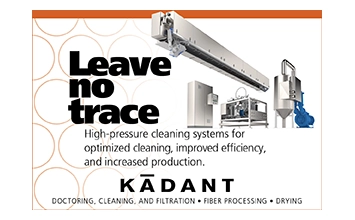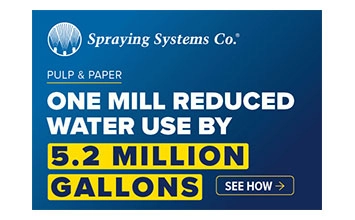The pulp and paper industry is constantly evolving, driven by the need to optimize processes and uphold high-quality standards.
As traditional methods of data monitoring struggle to keep pace with these demands, innovative data analytics approaches are emerging as vital tools. This article examines the roles of ad hoc and automated data analysis, highlighting their contributions to enhancing operational efficiency and decision-making in this complex sector.
Ad Hoc Data Analysis: Flexibility and Exploration
Ad hoc data analysis is characterized by its flexibility and exploratory nature. It is particularly valuable for addressing new and often unanticipated questions, troubleshooting, and exploring new phenomena. This approach involves a dynamic study of data, allowing analysts to adapt their methods based on evolving insights and the problem at hand.
Ad hoc analysis is iterative and non-linear, often requiring multiple cycles of redefining tasks, selecting measurements, refining and analyzing data, and drawing conclusions. This flexibility makes it ideal for generating fresh insights and understanding process behavior dynamically. For instance, when a mill experiences a sudden drop in paper quality, ad hoc analysis can be employed to investigate various factors such as raw material quality, machine settings, and environmental conditions. By iteratively refining their analysis, analysts can identify specific issues and take corrective actions.
However, the iterative nature of ad hoc analysis can be time-consuming and requires skilled analysts and significant resources. Additionally, the lack of predefined workflows can lead to variability in the analysis process, potentially affecting the repeatability of the results.
Automated Data Analysis: Consistency and Efficiency
Unlike ad hoc methods, automated data analysis employs a systematic and structured approach that capitalizes on existing process knowledge and is characterized by its repeatability.
This technique emphasizes data visualization, pre-configured workflows and process modeling. It incorporates predefined algorithms, dashboards, and reporting tools to process data. For instance, automated dashboards can track key performance indicators (KPIs) such as production rates, energy consumption, and quality metrics, offering real-time insights and alerts for swift decision-making.
The advantages of automated analysis include its consistency, efficiency, scalability, and the capacity to spread established information across the organization. However, it is less adaptable to new or unforeseen situations and relies heavily on existing understanding. Incorrect assumptions or models can lead to inaccurate outcomes, and substantial initial investment and ongoing maintenance are necessary to maintain accuracy and relevance.
Integrating Ad Hoc and Automated Approaches
Both ad hoc and automated data analysis play crucial roles in the pulp and paper industry. Each approach has unique contributions to process optimization and decision-making, and their integration can lead to more robust and adaptive operations.
By integrating both approaches, organizations can achieve a balance between flexibility and consistency, leading to enhanced operational efficiency and improved quality control. Ad hoc analysis provides the flexibility to respond to new challenges and opportunities, while automated analysis ensures the widespread application of proven insights. Insights gained from ad hoc analysis can be incorporated into automated workflows, continuously improving the accuracy and relevance of automated systems.
 Effective data analysis tools must support dynamic exploration and iterative workflows for ad hoc analysis, while enabling real-time monitoring and scalability for automated processes.
Effective data analysis tools must support dynamic exploration and iterative workflows for ad hoc analysis, while enabling real-time monitoring and scalability for automated processes.
Requirements for Data Analysis Tools
To effectively support both ad hoc and automated data analysis, tools must possess distinct capabilities. For ad hoc analysis, tools should allow dynamic data exploration, support advanced analytical techniques, and facilitate an iterative workflow. They should also integrate seamlessly with various data sources and offer a user-friendly interface to enable quick adaptation to new challenges.
For automated analysis, tools should support predefined workflows and models, enable real-time data monitoring, incorporate statistical process control (SPC), and be scalable to handle large volumes of data. They should also facilitate the dissemination of established knowledge across the organization.
Conclusion
In conclusion, integrating ad hoc and automated data analysis can significantly enhance the pulp and paper industry's ability to optimize processes and maintain high-quality standards. By leveraging the strengths of both methods, organizations can achieve a balanced approach that is both adaptive and consistent, ultimately leading to more robust and efficient operations.
Learn more
For those interested in exploring the innovative methodologies discussed in this article further, Trimble provides a comprehensive white paper titled "Innovative Data Analytics in the Pulp and Paper Industry: Balancing Ad Hoc Insights with Automated Consistency." This document offers an in-depth examination of the techniques and advantages of integrating ad hoc and automated data analysis. To request a copy and gain additional insights into optimizing processes in the pulp and paper industry, please contact
Connect with the authors!
 |
 |
| Matti Häkkinen, Trimble | Teemu Möykkylä, Trimble |
For any inquiries or further discussion, feel free to reach out to the authors and process data experts, Matti Häkkinen and Teemu Möykkylä. They are available to provide additional insights and information. You can contact us at
























































